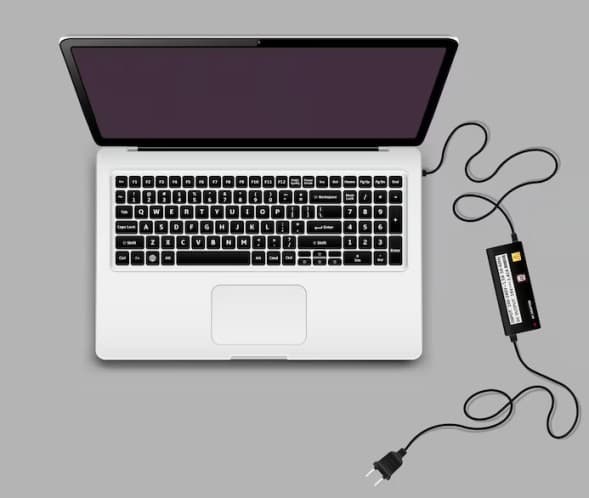A laptop is a crucial device in today’s world, whether you’re a student, a professional, or someone who just needs a reliable computer. But what happens when your laptop’s charger port is broken, and you can’t charge your device? Fortunately, there are ways to charge your laptop, even without a functioning charger port. In this article, we’ll show you the different methods you can use to charge your laptop.
How To Spot a Broken Charging Port
If your laptop is not charging properly, it could be due to a broken charger port. Here are some signs to look out for:
- The charger cable does not fit snugly into the charging port
- The charging port is loose or wobbly
- The charging port feels hot to the touch
- The laptop battery is not charging, even when the charger is connected
- The laptop only charges when the charger cable is held at a certain angle.
If you notice any of these signs, it’s likely that your laptop’s charging port is broken. In this case, you can try the methods we’ve listed below to charge your laptop without the port, or take your laptop to a repair shop to get the port fixed.
How to Charge a Laptop with a Broken Charger Port
There are different methods you can use to charge your laptop, even with a broken charger port. Here are the most common ones:
Method 1: Using a USB-C Port
If your laptop has a USB-C port, you can use it to charge your laptop. Follow these steps:
- Get a USB-C cable
- Connect one end of the cable to your laptop’s USB-C port
- Connect the other end of the cable to a USB-C power adapter
- Plug the power adapter into a power outlet
- Your laptop should start charging.
Method 2: Using a Universal Laptop Charger
Another option is to use a universal laptop charger. Here’s how:
- Get a universal laptop charger that matches your laptop’s voltage and wattage requirements
- Connect the charger to the wall outlet
- Attach the charger’s power cable to the charging port on your laptop
- Turn on your laptop.
Method 3: Using an External Battery Charger
If you have an external battery charger, you can use it to charge your laptop. Here’s how:
- Get an external battery charger that matches your laptop’s voltage and wattage requirements
- Attach the charger’s power cable to the charging port on your laptop
- Turn on the external battery charger
- Your laptop ought to begin charging.
Method 4: Using a Power Bank
If you have a power bank, you can use it to charge your laptop. Here’s how:
- Get a power bank that matches your laptop’s voltage and wattage requirements
- Connect the power bank to your laptop using a USB cable
- Turn on the power bank
- Your laptop should begin charging.
Method 5: Using a DC-to-AC Inverter
Another option is to use a DC-to-AC inverter. Here’s how:
- Get a DC-to-AC inverter
- Connect the inverter to your car’s cigarette lighter
- Attach the charger’s power cable to the charging port on your laptop
- Turn on your car
- Your laptop should start charging.
Method 6: Getting Your Charger Port Repaired
If none of the methods above work for you, you may need to get your charger port repaired. You can do this by:
- Contact the manufacturer or authorized repair center to see if they offer charger port repair services.
- Take your laptop to a local repair shop that specializes in laptop repairs.
- Purchasing a replacement charger port online and replacing it yourself (if you have experience with laptop repairs).
How can Laptop Charging Ports be Prevented from Breaking?
Prevention is always better than cure, so here are some tips on how to prevent your laptop’s charging port from breaking:
- Avoid pulling the charger cable out forcefully. Always hold the cable by the plug when removing it from the port.
- Keep the area around the port clean and free of dust, debris, and other foreign objects that could damage the port.
- Use a cable tie to prevent the cable from bending at the port. This will reduce the stress on the port and prevent it from getting damaged.
- Be gentle when plugging in the charger cable. Do not force it into the port if it does not fit snugly. Make sure the plug is aligned properly with the port before pushing it in.
- Use a surge protector to protect your laptop from power surges and electrical spikes. These can damage the charging port and other components of your laptop.
By following these tips, you can prevent your laptop’s charging port from breaking and avoid the need for costly repairs. Remember, taking care of your laptop is important to ensure its longevity and performance.
End Note
A broken charger port doesn’t mean the end of your laptop. There are various methods you can use to charge your device, such as using a USB-C port, a universal laptop charger, an external battery charger, a power bank, a DC-to-AC inverter, or getting your charger port repaired. Make sure to choose a method that matches your laptop’s voltage and wattage requirements to avoid damaging your device.
Don’t let a broken charger port get in the way of your work or entertainment. With the methods we’ve listed above, you can keep using your laptop even without a functioning charger port.
